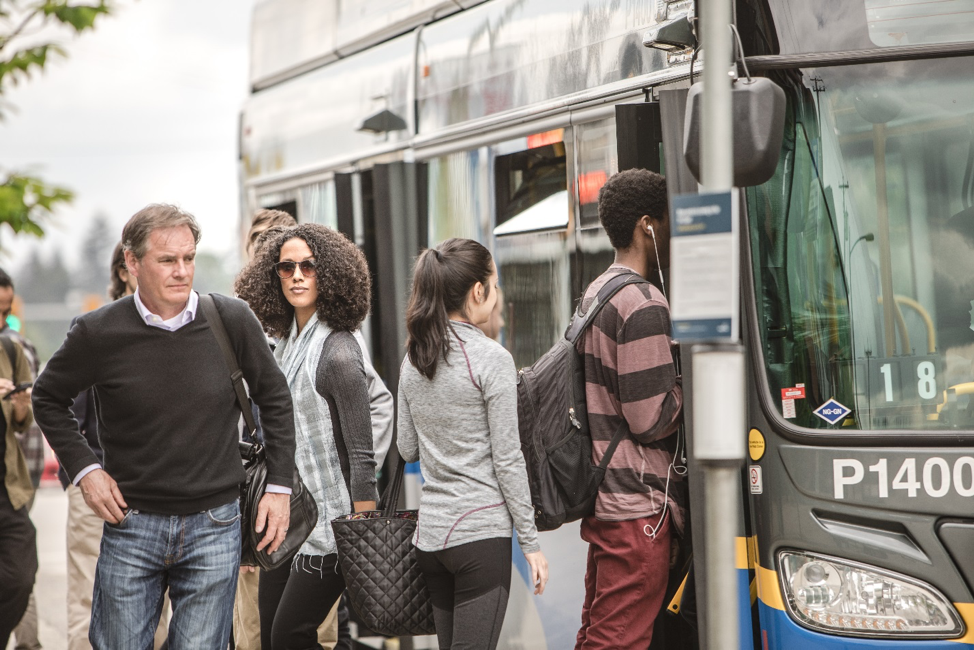April Tech Updates
- Author: Kevin Chambers
- Date: April 27, 2023
It’s been a busy month in the world of mobility and technology: several big transit agencies announcing big plans on…
This post was guest-written by Darnell Chadwick Grisby, Director of Policy Development & Research at the American Public Transportation Association (APTA)
To ensure an equitable and efficient mobility future we must enumerate challenges, develop strategies and communicate a coherent vision. There is not a lack of research or frames of reference envisioning the future of mobility. However, in this short piece, I will review some of the research driving the integrated mobility movement in three categories--data analytics, automation and mobility management.
1) Data Analytics. Surely, you’ve heard of the term “big data”. Data—once analyzed—will revolutionize logistics, operations, planning and customer intelligence. Much like social media platforms, data may be more lucrative than the customer-facing service provided. Data may offer a competitive advantage, insight for new product lines, and advertising revenue. Given the existential importance of data, it is clear why it is closely held. In order to gain leverage as a partner, agencies should be aware of the lucrative nature of their own current and future data and its use.
Under the Transportation Cooperative Research Program’s J-11 series, a new J-11 project looks into monetization strategies for transit agencies using current and future data.
Blockchain is an important part of the data conversation. Some believe that blockchain may offer a more secure way to transfer data--which is separate from its more controversial and well known currency functions. It’s a high-profile, unproven technology that has sparked spirited conversation. There are political constituencies that support and oppose blockchain; its impact on other industries is evolving.
2) Automation--Driven by Data Analytics-- Rich datasets allow machines to learn. The better the data we collect, the more applicable and efficient the technology. While experts may disagree on the timing of the release and uptake of autonomous technologies, there is consensus on its disruptive potential. One area to study is the near-term policy implications of Low-Speed Autonomous Vehicles (LSAVs).These LSAVs will be the transit industry’s first foray into putting such vehicles into service. While the media focuses on personal vehicles, transit agencies are already developing LSAV pilots. Beyond LSAVs, autonomous technologies have the potential to improve productivity and bottom-lines.

3) Mobility Management--The Glue That Binds--Transportation network companies, corporate shuttle buses, jitneys, and bikeshare programs are all part of our emerging mobility ecosystem. Thanks to venture capital investment, we will likely see even more entrants soon. From Shared Mobility and the Transformation of Public Transit, to new J-11 studies looking at the impact of corporate shuttles and jitneys, to the continuum of partnerships that are possible with TNCs---one thing is clear--a mobility manager is essential.
The open question is whether the mobility manager will be a public or private sector entity. As the private-sector moves towards serving an entire mobility market by offering many price points (including the low-income), it is possible that companies themselves could act as a mobility manager. Undoubtedly this will become a reality in some communities. However, there will still be a need to ensure that equity and access is measured and the proper incentives are provided. At the same time, we should be strengthening existing public services. Declines in ridership make clear that communities should redouble their support for public transportation. Part of this approach will have to include better communications around the importance of bus lanes, and deployment of quick-build techniques to improve transit service. There are new J-11 projects meant to address these very topics. Let us keep our ideas big and ensure that whatever is happening outside of the mobility world is, at least, considered for its application within it.
Images used with permission from APTA.
Have more mobility news that we should be reading and sharing? Let us know! Reach out to Sage Kashner (kashner@ctaa.org).
Please confirm you want to block this member.
You will no longer be able to:
Please note: This action will also remove this member from your connections and send a report to the site admin. Please allow a few minutes for this process to complete.